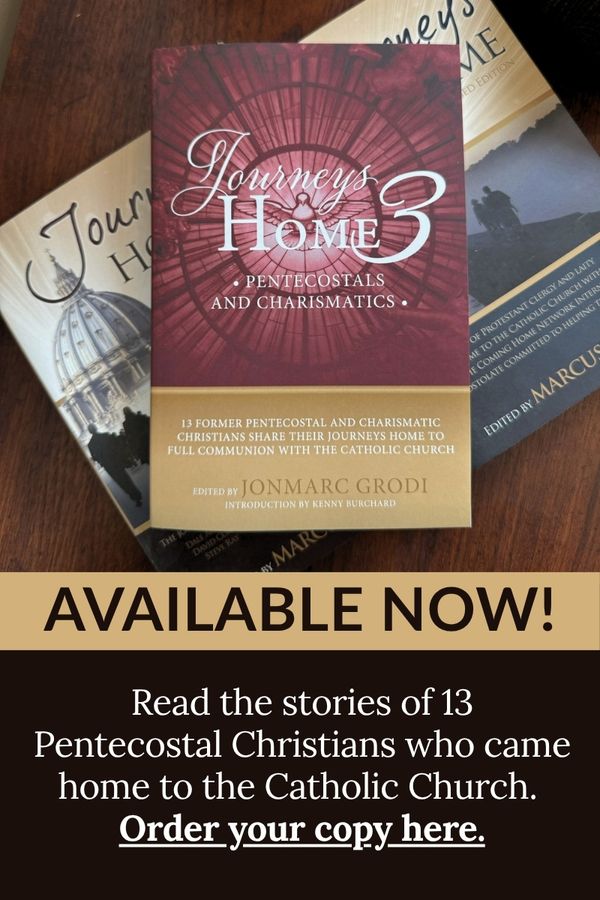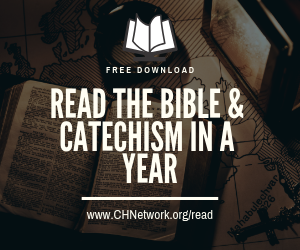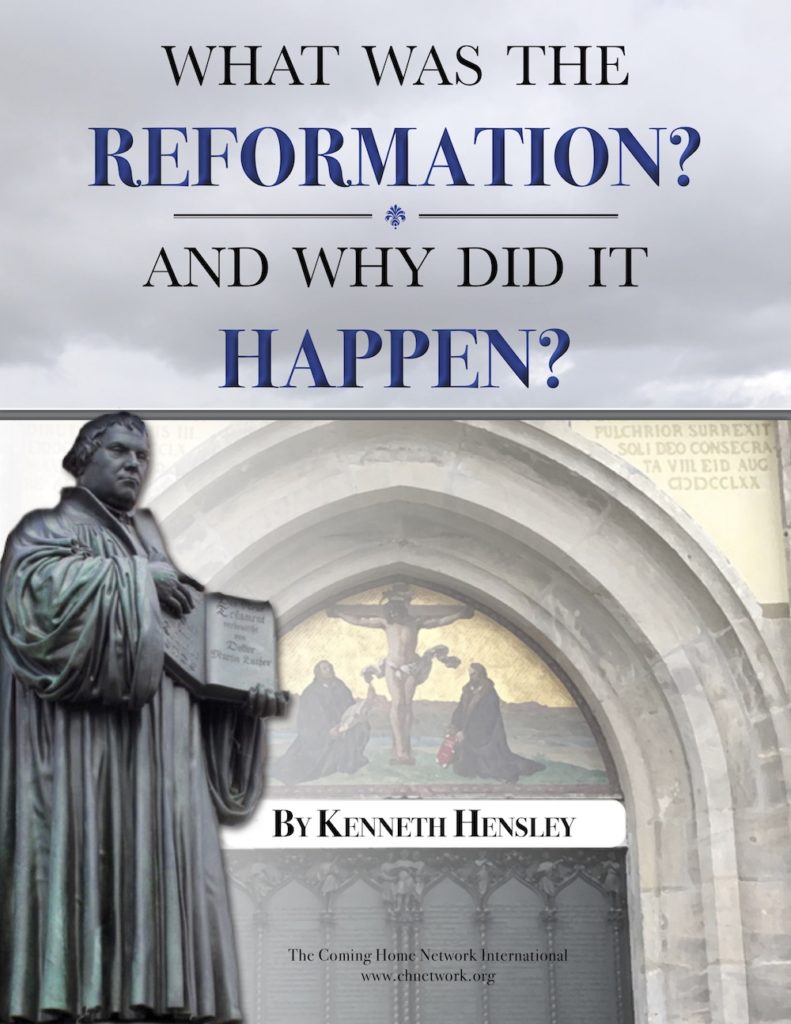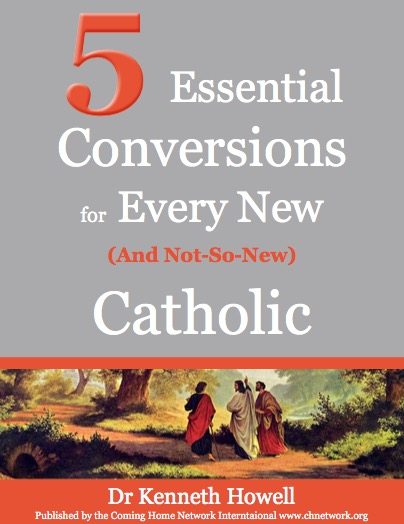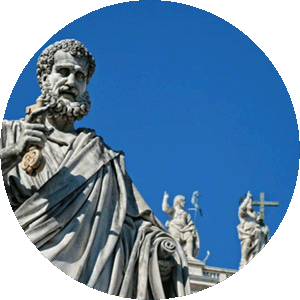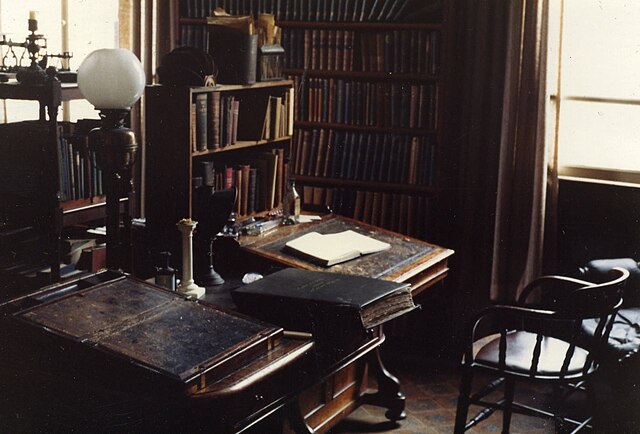
Nominal Christian, Occult Years, & Evangelical Conversion
When I was a child, we attended an old Protestant church in inner city Detroit. The average age of the people was probably above fifty years. This was my only experience of Christianity, and it appeared to me — insofar as I was able to judge it — to be boring, inconsequential, and removed from the “real world.” The congregation ceased to exist in 1968, and after that, I barely attended church at all for the next nine years. My family never sought another regular church to attend. Despite all this, God instilled in me a certain sense of the sacred. It felt different in church.
After I stopped going to church, I became fascinated with the supernatural, and a vague, “open to anything” occultism (ESP, telepathy, the Ouija board, astral projection, and other practices). These activities and curiosities weren’t just frivolous “games” in my mind. I was genuinely pursuing the occult and believed that it was quite real. Now I know much of it is indeed genuine, but that it lies in the Satanic or demonic realm. G.K. Chesterton noted that when people reject Christianity, the problem is not that they believe in nothing, but that they will believe in anything. That was me!
Meanwhile, my older brother Gerry got involved with the “Jesus Movement” in 1971. I resisted all that, and it took the horrific experience of severe depression for six months at the age of 18 to get me to see that I couldn’t survive on my own. I accepted the notion that I could live without God, as if He was irrelevant to everyday life. This is what is called “practical atheism”: living as if God didn’t exist. I had gone along for ten years living a very secular life, doing in the 70s what is fashionable today. God had to puncture my pride and self-delusion and confront me with the emptiness of that life to jolt me back into reality.
In April 1977, the superb Franco Zeffirelli film Jesus of Nazareth was on television. The artistic element of drama powerfully brought home to me the vitality of Christianity in a unique and effective way. What moved me the most was the realistic portrayal of Jesus. I was dazzled by it. For the first time in my life, I saw what He was really like.
Shortly afterwards, I “converted to Christ,” or what I thought at the time was being “born-again” or “saved.” However one interprets this, I decided to be a serious disciple of Jesus, which every Christian must do, whether they are born into a practicing Christian home or come to the realization later. But despite my initial burst of zeal, sadly, I settled into a relatively lukewarm “routine” and still wasn’t going to church on Sunday; only Bible studies. I was extremely “unliturgical,” because liturgy had always bored me.
In August 1980, when I finally yielded my whole being to God, I experienced a profound “renewal” in my spiritual life, including – importantly – an understanding as to why sex outside of marriage was wrong. The immediate cause was attending a Non-denominational, charismatic church, part of the larger “Jesus Movement” among young people. During the next year and a half, all kinds of momentous things happened. I started truly worshiping God from the heart at the Sunday services — a totally new thing for me!
Discovery of Apologetics and My Evangelical Campus Ministry
I began intensely studying (in a group devoted to it) the “cults”: heretical sects that falsely claimed to be Christian. This was my first foray into apologetics, and I specialized in refuting the errors of the Jehovah’s Witnesses. That led me to a very deep and fruitful study of the divinity of Christ and the Holy Trinity in Scripture. I also experienced a profound filling of the Holy Spirit that changed my life and inspired me to study the Bible, do street witnessing, and to become pro-life, after attending a conference in early 1982.
In 1981, I ran across Evangelical apologist Josh McDowell’s classic 1972 work, Evidence That Demands a Verdict, and this initiated, in a flash, my interest in “historical apologetics” — reasons why Christians believe that the Bible is trustworthy, etc. Soon, I started thinking that God might be calling me to do apologetics as my life’s work, because I was so interested in it. Eventually, that led to a full-time campus evangelistic ministry (with church backing; I was no “lone ranger”). I was now a Protestant Evangelical apologist.
Just before beginning this ministry, I married my wonderful wife, Judy, in October 1984. She has always supported my ministry work 100 percent, which was an absolute necessity, given the various forms of suffering that I have endured, both as a Protestant and a Catholic.
Many of my friends during my Evangelical years were former Catholics. I knew very little about Catholicism until the mid-80s, but I was never overtly anti-Catholic. This was probably because I had always loved Church history, too, which was what eventually led me to the Catholic Church.
Long story short, my campus ministry collapsed. I thought I was trying to follow His will. This was all I wanted to do with my life, and what I strongly felt God directed me to do. Yet it didn’t work, and here I was, at age 31, seemingly a complete failure with no future. I had given it my all, and it wasn’t good enough to even sustain the effort. What was to become of my calling? Would the whole thing turn out to be a false and mistaken path? It seemed like a cruel joke. I was thoroughly confused and didn’t understand how and why all this had happened.
But I knew that God could see what the future held for me (He was already there), and that He had a plan for my life. I had no idea what was to come: nor could I have ever guessed it in my wildest dreams. Holding onto my faith, I didn’t despair and was determined not to re-live the nightmare of 1977 again. I knew that God was in control.
I would have to wait and trust, as I’ve had to do so many times in my life: for my wife (eight lonely years after I started dating), getting a book published (seven years), having children (after six years of marriage), our first daughter (at age 43), full-time Catholic apologetics (also age 43), and many other lesser things. I wouldn’t get back to full-time work in my vocational field until twelve years later, in 2001: a full twenty years after God called me to it.
Pro-Life Activism and Meeting Serious Catholics
The other major activity in my life in the late 1980s, and one that God directly used to bring me to the Catholic Church, was the pro-life movement, and eventually Operation Rescue. By 1990, I had participated in about 25 rescues (including a national one in Washington, DC). I was very impressed with the Catholic rescuers.
Catholics oftentimes don’t understand their faith—why they believe what they do—and are unable to defend it. Informed Protestants know this, and it’s a major reason why many of them are unimpressed by Catholicism. When I finally did meet Catholics in the pro-life movement who could and would share and defend their faith, exhibiting a “spiritual fervor” that I had never observed in other Catholics (not that I had tried very hard to find it!), it was so intriguing to me that it led to extensive discussions, study, and ultimately conversion. Curiosity may have killed the cat, but it sure helped me!
I began to fellowship with my Catholic brethren at rescues, and sometimes in jail, including priests and nuns. Although I was unpersuaded theologically, my personal admiration for orthodox Catholics grew. In one of the rescues (in Toledo, Ohio), I wore Rosary beads around my neck, to the delight of my new Catholic friends.
In January 1990, I started an ecumenical discussion group at my home. Two knowledgeable Catholic friends from the rescue movement started attending. I was pleasantly surprised when they offered good replies to my inquiries, because I used to think, “Catholics don’t have any answers to these questions.”
In the meantime, I was reading exclusively Catholic books (and all the short Catholic Answers tracts), trying to be fair-minded. One key volume was The Spirit of Catholicism by Karl Adam. My two Catholic friends at our group discussion continued to offer great food for thought in their replies to my endless questions about the doctrines of Catholicism (especially Eucharistic theology and Mariology).
Contraception: the First “Domino” to Fall
At that time, being a pro-life activist, I was curious about contraception, particularly the fact that the Catholic Church was against it and claimed that there was a connection between it and abortion. I tried to figure that out, and I thought, “What connection is there, because one is trying to prevent conception, while the other is killing a child?” As I deeply pondered it, one of my friends said to me, “The whole Christian Church was against contraception until 1930.” In that year, the Anglicans were the first to change the prohibition, offering exceptions in “hard cases.”
This was a true “bombshell” to me, because I thought it was absurd to believe that the 20th century would get a moral teaching right, when 1900 years of Christianity had gotten it wrong. I didn’t have a “comeback” for that. I just stood there, silent, at one of the meetings, and I kept thinking about the issue and working through the distinction between contraception and Natural Family Planning, which is permitted for Catholics. I came to realize that with contraception, one is deliberately thwarting a possible conception and going ahead and having sex anyway, and that it’s against the natural order. One didn’t even have to appeal to Church authority to grasp the wrongness of it, after serious open-minded reflection.
Then one day, my friend, the late Al Kresta, was at my house and made this analogy to contraception of how eating entails both the nutritional aspect and the taste buds, and that people would think it strange if someone separated one from the other; if they ate only for pleasure or vice versa. I remember thinking, “Well, if I change my mind on this, I’ll be in a small minority among Evangelicals….”
It could possibly develop further, but I told myself, “Well, it doesn’t mean I’ll become a Catholic.” In any event, mere conformism has never motivated me to do anything, and I did become convinced of the wrongness of contraception while still a Protestant—and my wife agreed. But I thought it was strange and puzzling that the Catholic Church had, in my opinion, the best moral theology of any Christian communion, and was so profoundly right about these moral issues, yet was dead wrong regarding Mary and the pope and the typical things that Evangelicals dislike and reject.
My “Protestant Myth” of Church History and Flailing Against Infallibility
At this time, I still had a view that the early Church was Protestant, but had become corrupt with the Inquisition, until Martin Luther had picked up the ball in the 1500s and the “Reformation” was the “way to go” after that point. I thought that the Catholic Church was truly Christian, but it wasn’t what I would call the mainstream. Evangelicalism was really where it was at: the cream of the crop. Catholics had a lot of truth, but less than we had. Individual Catholics could still be saved (what we would call “real Christians”), but they were in a different league — sort of Class B. That’s how I thought as an Evangelical who was not anti-Catholic (I sought to be ecumenical), yet very pro-Protestant.
As a committed Evangelical Protestant with a great respect for the history of Christian doctrine, I nevertheless subscribed to an erroneous contra-Catholic view of Church history: a vague, semi-legendary conception of the early Church as quasi-Protestant and lacking what are now called “Catholic distinctives.”
If the early Christians weren’t technically and exhaustively Protestant (as defined theologically and ecclesiologically by the new movement in the 16th century), they certainly, for the most part, weren’t Catholic—or so I had casually, and wrongly, assumed. As far I was concerned, they were “proto-Protestants.”
I believed that the Catholic Church had “passed the baton” in the sixteenth century to the more “biblical” Protestants, who succeeded in reforming the Church universal. In other words, I held to an “organic” conception of Church history, somewhat like the Protestant Church historian Philip Schaff, and many Reformed, Anglican, and Lutheran theologians and historians, whereby Protestantism was a legitimate development of, heir to, and legatee of, historic Catholicism. It was a more advanced and theologically superior version of Christianity.
I vehemently tried to shoot down the idea of infallibility. This was, by far, my biggest objection to Catholicism: the infallibility of the Church and the pope (with a particular aversion to the Inquisition as well). I’d say, half tongue-in-cheek, “Okay, you guys can be the Church, or a Church, but you’re not infallible.” I thought that was totally out of the question: it just couldn’t be—there were too many Catholic errors and self-contradictions throughout history, and so forth.
But one of my Catholic friends claimed that the Catholic Church had never contradicted itself in any of its dogmas. This, to me, was self-evidently incredible and a priori implausible, so I embarked immediately on a massive research project designed to debunk once and for all this far-fetched notion that any Christian body could even rationally claim infallibility, let alone actually possess it. I quickly found some of the most influential polemics against Catholic infallibility, such as a book by the Irish Anglican anti-Catholic George Salmon, The Infallibility of the Church: a relentlessly wrong-headed and acidic work that has been refuted many times by Catholic apologists. Yet, even C.S. Lewis recommended it to his friends.
Using this severely biased source, I parroted Salmon’s tired and poor arguments: for example, bringing up the supposedly heretical Pope Honorius. I produced two long treatises containing difficult “problems” of Catholic history and alleged contradictions (much like atheists do with the Bible), to provocatively challenge my Catholic friends at the group discussions.
I wasn’t being objective; I was special pleading, starting with a preconceived notion and looking for only what fits in with it. What I was trying to do, and the methodology I used, was in retrospect ultimately an intellectually dishonest effort. I proceeded with my hostile research, cavalierly assuming beforehand that the early Church was much more Protestant than Catholic. I now know, as a Catholic apologist, that there are solid Catholic answers to all these so-called charges of heresy and massive Catholic doctrinal self-contradiction. I’ve produced them myself.
I was like two persons in one: I had great respect for Catholic moral teachings, but much less for (what was a caricature of) the doctrinal history of the Catholic Church. Yet when my friends talked about Mariology or the Eucharist, I listened with sincerely respectful wonder. Then, when we discussed infallibility and history, I was scornful and acted like an atheist who thinks he has demonstrated 384 contradictions in the Bible: almost all obviously fallacious when scrutinized by someone who understands the interpretation and exegesis of Scripture. I didn’t have a clue as to how to properly interpret Church history.
A Paradigm Shift
My Catholic friend, John McAlpine, confronted with the mass of jaded, highly selective contra-Catholic historical “evidence” I had compiled, and my relentless polemics about supposed Catholic errors and corruptions through the centuries (citing and parroting Salmon), was understandably exasperated with me. I was getting into some pretty technical things and was thoroughly obnoxious. He didn’t have instant replies concerning Pope Honorius and all these alleged “difficulties” in history. So, as a way to counter my onslaught, he urged me to read St. John Henry Cardinal Newman’s Essay on the Development of Christian Doctrine and gave me a paperback copy.
The timing, in God’s providence, was perfect. I was ready to receive and be convinced by the arguments I was about to encounter, despite having fought so hard, almost ferociously, against infallibility. Cardinal Newman’s brilliant reasoning utterly destroyed the whole conception that I had—this notion that the early Church was simple and Protestant, and had become corrupt—because he explained what it meant to be a consistent development as opposed to a corruption. A doctrine can grow, but remain the same in essence, just as an acorn grows into an oak tree. Understanding grows over time. I quickly realized that I couldn’t refute his reasoning and the facts of Church history.
I had thought that the early Church was a bunch of on-fire “Jesus Freaks” meeting in caves. Certainly they didn’t believe in the “Catholic” Eucharist, or any of that kind of “highfalutin’ stuff.” But that’s really not what we find when we study early Church history. I didn’t do this in 1990, but since then, I’ve read the Apostolic Fathers and learned that the early Church was very “Catholic” indeed.
It believed in the Bodily Presence of Christ in the Eucharist, regenerative baptism, apostolic succession, bishops, the communion of saints, the Mass — all the things, pretty much, that Catholics believe today, only in more primitive form. And we can’t find anywhere the idea or practice of Scripture alone as the rule of faith. It’s just not there. Even faith alone, or imputed, extrinsic, forensic justification, was well-nigh non-existent all through the patristic period, and in fact, all the way up to the time of the advent of Protestantism: even according to Protestant scholars Norman Geisler and Alister McGrath.
Newman’s essay was probably the best thing I could have read at that time, regardless of whether I was going to be convinced or not. It provided the “best shot” that the Catholic Church was likely to give in defense of its doctrines that exhibited a marked “growth” throughout history, to the dismay of Protestants. Finally, I was now reading some sort of response to the research I had been doing for months, under the influence of thoroughly Protestant (and anti-Catholic) presuppositions. It was a “revelation.”
After consideration of Cardinal Newman’s extensive comparisons of Protestant innovations and Catholic developments, it became quite clear to me that Protestantism in several ways (not all) represented a corruption of historical Christianity, rather than a progressive and consistent development, as I formerly believed; and my thinking underwent a paradigm shift of massive proportions.
Various Protestants had introduced radically new doctrines such as sola fide, sola Scriptura, sectarianism, private judgment, a non-hierarchical, merely “democratic” (or “state”) church, and symbolic baptism and Eucharist, which were sheer novelties, rather than reforms, supposedly hearkening back to the alleged state of affairs in the early Church. But they simply can’t be found there. It’s a losing battle.
Fr. John A. Hardon and the Final Stages
During my intense “conversion year” of 1990, I had the great privilege of meeting the late Servant of God Fr. John A. Hardon, S.J., the eminent Jesuit catechist and author, and of attending his informal catechetics classes at the University of Detroit. This gave me the opportunity and blessing to be able to learn personally from a scholarly, authoritative Catholic priest, who was a delightful and humble man as well. This was as good an introduction to living, breathing Catholicism as anyone could ever hope for, and I shall always be grateful for it.
It almost felt like being in the presence of Jesus, listening to him teach and taking in his extraordinary insight. I had the immense honor of knowing him. Encountering him proved to be a watershed event in my life and that of my family. He helped me to convert, received me into the Church, wrote the Foreword of my first book, A Biblical Defense of Catholicism, and also baptized my first two children.
I also knew by this time that I needed to more closely examine Protestantism’s historical roots. I had previously read some material on Martin Luther, the founder of Protestantism, and considered him one of my biggest heroes. I passionately endorsed the standard textbook myth of Luther as the bold, righteous rebel against the darkness of Catholic tyranny and superstition added onto pristine “early Christianity.”
But—as with any “controversial” historical topic—it’s necessary to read “the other side” in order to get a fuller, balanced, and more accurate picture. When I studied a large portion of the six-volume biography Luther, by the Jesuit historian Hartmann Grisar, my opinion of what is called “the Protestant Reformation” dramatically changed. Grisar showed how several foundational tenets of Protestantism that contradicted Catholicism were novel and unable to be traced back to the early Church.
I had formerly espoused the myth whereby Martin Luther came onto a scene where the Bible was forbidden and the Church was in darkness, and where he heroically brought back the Bible to the people in their own language. The Catholic Church—so we were told—had deliberately hid it, so that no one would see how Catholicism contained many false, unbiblical teachings. In actual fact, in the hundred years before Luther’s time, there were fourteen versions of the Bible in German, translated by Catholics. This fact effectively debunks the myth, once it is known. But the problem is that so many people (including myself up to that time) don’t know it.
Widespread literacy and mass printing of Bibles didn’t happen until the advent of Johann Gutenberg’s movable type printing press in the 1450s. Chained Bibles had to do with the scarcity of copies before the printing press made them widely available at an affordable price. Libraries would chain Bibles in order for people to have access to them while preventing them from being stolen, since copies were so rare and valuable. It was the rough equivalent of today’s “special collections” under lock and key in libraries.
My conversion, in summary (in terms of the persuasive ideas), was a combination of the cumulative effect of my change of mind on three issues: contraception, development of doctrine, and Catholic scholarly opinions on the origin of Protestantism, all pointing in the same direction. But ultimately, it’s all due to God’s grace. I happily fell “victim” to Chesterton’s observation that one cannot be fair to Catholicism without starting to admire it and eventually becoming convinced of it.
I was received into the Church in February 1991, and my wife Judy returned as well. Immediately I started writing many “treatises” about the biblical rationale for “distinctive” Catholic doctrines, in order to explain my decision to my Protestant friends. Eventually, Catholic friends urged me to turn it into a book, and it evolved into A Biblical Defense of Catholicism, completed in May 1996 and officially published by Sophia Institute Press in June 2003.
In the meantime, my conversion story was published in Catholic Answers’ This Rock in September 1993, and I also wrote articles that year for The Catholic Answer. I began my website, Biblical Evidence for Catholicism, in February 1997. The company I worked for (making deliveries) went out of business in December 2001, and (at long last!) I launched my full-time Catholic apologetics apostolate. God has graciously provided for our needs ever since, and as I defend Catholicism, my own faith is invariably strengthened. This is the great blessing of Catholic apologetics work.

